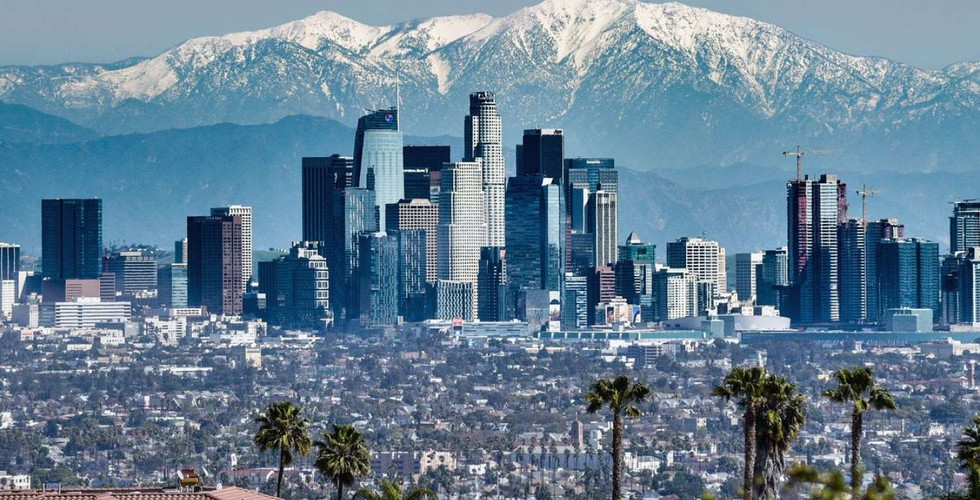By Amy Graff, TimesUnion
Gorgeous photos of clean-air views across Los Angeles have been popping up all over social media in recent weeks amid the coronavirus crisis.
The city known for its gridlock traffic and choking smog that gives the air a brownish hue has been getting a lot of attention for air that now appears astonishingly clear.
One Twitter user posted an image taken from Griffith Park out to the ocean and noted that you can see Catalina Island, a landform that's usually not visible from 70 miles away due to hazy views.
Many on Twitter made statements like "Los Angeles is experiencing its longest stretch of clean air in decades" and "I miss surfing with my kids but these clean air views from our backyard are just jaw dropping. This is not normal for Los Angeles."
As you can imagine, the Twitterverse is saying this because of the shelter-in-place order that went into effect in mid-March and stopped people from driving and clogging highways with polluting cars.
Is this really the case? The South Coast Air Quality Management District (SCAQMD) tracks air quality in the Los Angeles area and said that while reduced economic activity has undoubtedly helped improve air quality, there's not enough data yet to draw any conclusions on just how big of a difference it has made.
In March, L.A. Metro saw an overall 33% decline in vehicle flow and a 20% dip in truck flow, with most of the reduction in traffic occurring in the second half of March when social-distancing restrictions were issued.
It's true that in March the region saw its cleanest air stretch at least since 1980 for ozone and fine particulate matter (PM2.5) for the month of March, according to SCAQMD. But Bradley Whitaker, a spokesperson for the agency, said, "Weather has by far the greatest impact on air quality, and in recent weeks, Los Angeles has seen an increase in rainfall and stormy weather."
Whitaker added, "This, coupled with cold and windy days, has helped push pollutants out of the atmosphere and improved regional air quality."
The recent pattern with rainy weather and cleaner air isn't entirely unusual in March and April for the region.
What's more, the first seven days of the clean-air stretch were during the period before the stay-at-home order went in effect, showing other important factors have played a role, he said.
Meteorologists at SCAQMD are continuing to examine the data separating meteorological impacts and the effects of reduced emissions. Whitaker said as L.A. weather returns to a dry pattern, more data is being collected and it will be easier to reach a conclusion on the effects of fewer cars on the roads.
Visit the source of this story, here.
Comment on this story below.












Σχόλια